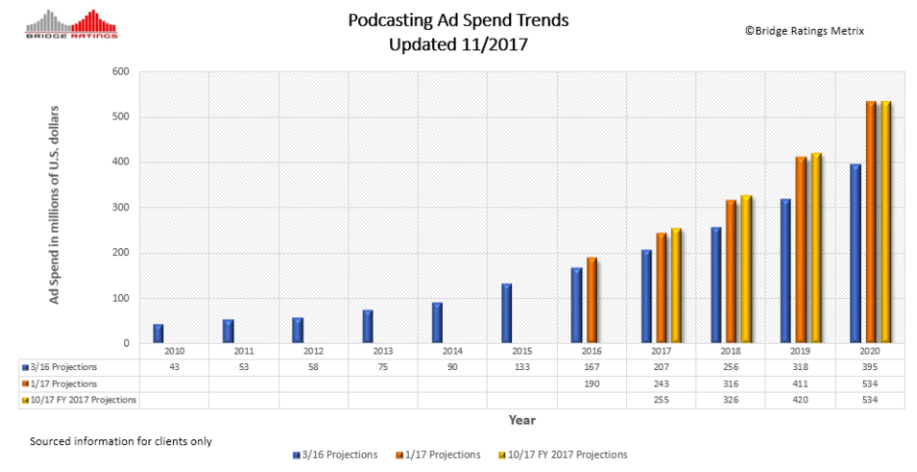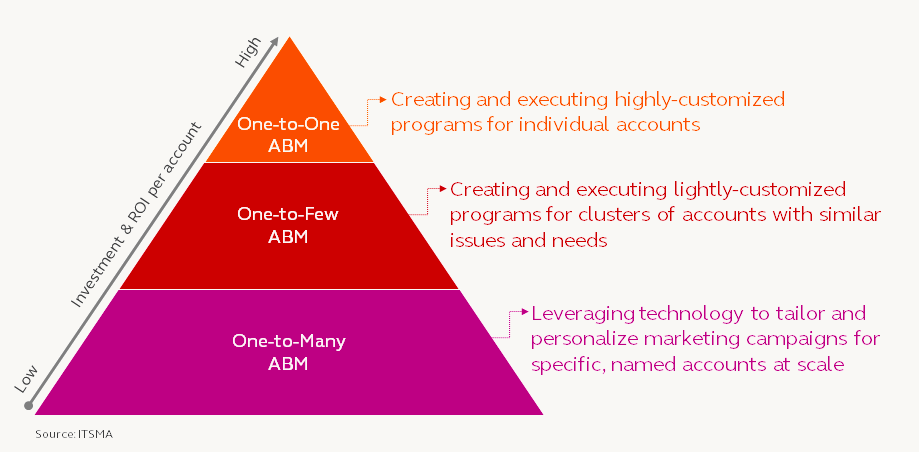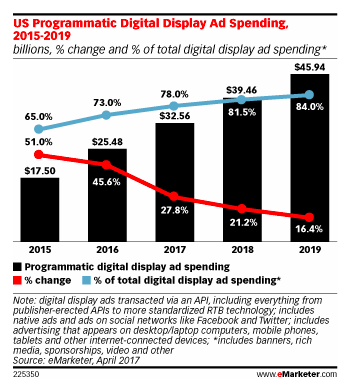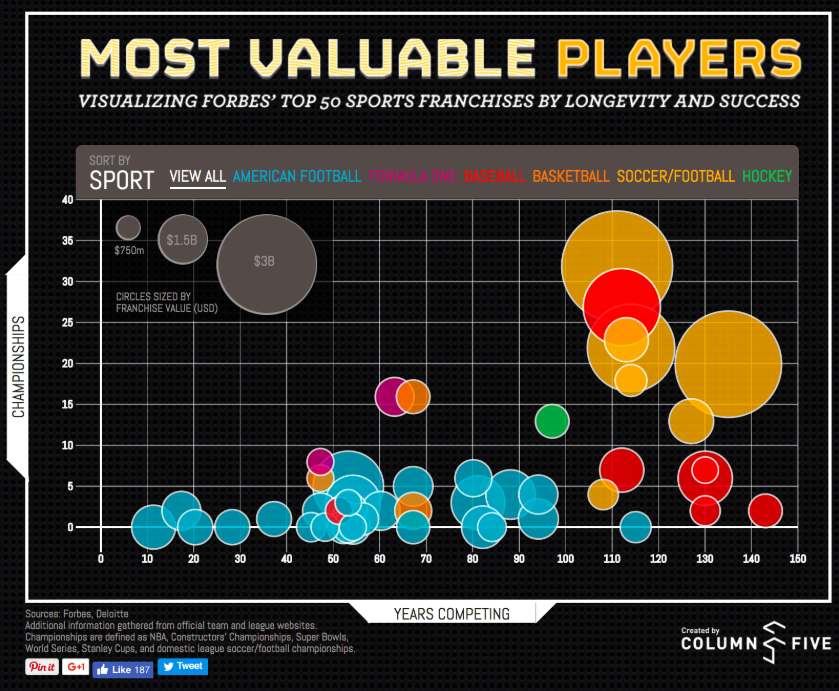Article's Content
[Updated: Feb 1, 2020]
I find the word trend to sometimes have a negative connotation associated with it.
When we’re talking fashion or the newest superfood, a trend tends to indicate something that’s being followed right now, but that’s not necessarily bound to last.
Well, that’s not the only kind of trend. The trend I’m referring to describes the direction in which things are moving.
In business and in marketing, that’s what we want—we want to know, based on where we are now, where things are headed.
While trends can be up and down, here and gone, the fact of the matter is we need to be continuously paying close attention so as to not be left behind.
And that’s what I want to do for you with this post.
Based on some new research and studies, I’ve accumulated the top 11 marketing trends that every B2B marketer needs to know today:
1. The Rise Of B2B Personalization
Today consumers expect a lot from the brands they interact with. They want to know that when they interact with a business, they are speaking with humans on the other end.
A business to business relationship should be no different.
As a business speaking to other businesses, we should know more than anyone that there are humans on the other side of those logos, corporate email accounts and promoted tweets.
So the question becomes not how do you engage a business, but how do you engage people? And the answer to that is—authentically!
You want to tell stories, respond, and engage. You want to use natural language and partake in meaningful interactions. Rather than generic, massly circulated content, think about customizing your messages to individuals.
One popular rising trend takes this exact approach. That is, personalized email campaigns.
Consider these stats:
- Emails with personalized subject lines are 29.3% more likely to be opened
- Emails with personalized messages have a 29.95% open rate and a 5.03% click-through rate
- Segmented campaigns lead to a 760% increase in revenue
That’s a big deal.
When crafting emails to business leads, make sure you’re not sending the same message to each lead. Find the name of a person you’re reaching out to and come up with something relatable to refer to in your message.
If you feel like this can take up a lot of time, it can, but luckily there is email automation and scripting technology that can help with this. And it’s worth it!
2. Influencer Marketing In B2B Marketing
Influencer marketing for B2B is a little different than what you may know from B2C influencer marketing.
Businesses aren’t looking for celebrity testimonials; they’re looking for reliable, authoritative, research-backed evidence of why they should choose your product or service. They want to hear from people who they trust already.
Customer testimonials and case studies help to influence decision making. So do referrals from current or past clients. While you may be exploring these activities already in your business, there is a newer trend that you may not have yet considered—partnering with podcasts.
According to the latest Podcast Consumer report by Edison Research, the percentage of people listening to podcasts week over week and month over month is on the rise.
While podcast marketing is not new, it is still growing. Based on accumulated data and research to date, Bridge Ratings projects podcast ad spend to hit over $500 million by 2020.

You see, when someone follows a podcast, they end up following this podcast for weeks and months at a time, as it plays out in a series. Throughout this time, the podcaster is educating his or her listeners on a specific topic, forming a relationship with them and building a foundation of trust. People (yes even those behind businesses) buy from people they trust.
3. Content Marketing For Generating Leads
Creating consistent, valuable content to attract leads is no longer optional.
While this is an obvious and wide-spread marketing activity, there are still some ways you can stand out where other businesses are falling short:
Video Content
The HubSpot State of Video Marketing in 2018 survey found that 81% of businesses use video content as part of their marketing strategy. Of those who don’t, 65% say they plan to use it this year.
And with 74% of business people saying they’ve made a purchase after watching another company’s video, it’s no wonder why video should be on every organization’s radar.
From explainer videos to webinars to behind the scenes footage, there are many ways your team can successfully implement video in 2020 and beyond.
Long-Form Content
Buzzsumo and Moz teamed up to analyze data from 1 million online articles to see what types of content gets shared and why. In their research, they found that 85% of content published on the web contains less than 1000 words.
What does this mean? Well it means that everyone is doing the same thing! And it’s not smart, because their analysis showed that articles with 1000 or more words actually got more love.
Stand out from the pack and take the time to regularly craft some in depth, researched-back content that will truly wow and win over your audience. When you’re think about creating blog content, be sure to avoid some of the common blogging mistakes we often see in the beginning like trying to make every post perfect, or skipping the content distribution phase altogether.
4. The Emergence Of Account-Based Marketing (ABM)
The findings in ITSMA’s 2017 Benchmark Report indicate that 87% of marketers say that ABM, above all other marketing, leads to the largest increase in ROI.
This again speaks to the desire of personalization and the benefit such a concentrated approach can have for your business.
The idea with ABM is that your efforts are exerted in a more efficient way. You spend your time and energy selling to those customers that you know would truly benefit from your product or service, rather than tossing out a line and seeing who bites.
Online outreach is more targeted, sales pitches are more finely crafted, and relationships are more carefully nurtured. Each interaction has a specifically defined purpose and a clear view of the end goal.
When we’re talking a one-to-one ABM approach, sales cycles can easily take a couple years to complete. While not every business may have the resources to take on this approach, one of the other types may be more suited to your company:

If you have a product that you believe in, know exactly who you are targeting, and have the right resources to execute, you should be looking to account-based marketing to take your product or service to the next level.
5. The Growth Of Virtual Reality In B2B
Imagine this: Your potential customer puts on a pair of glasses and is transported to another place. In that alternate universe, they can see how your product works; they can put themselves into your store or your restaurant; they can even attend an educational workshop remotely.
Well it’s not that hard to imagine because it’s happening now!
Virtual reality is a game changer for businesses! It allows you, as the marketer or sales rep, to be present while the client moves through this unique sensory experience. They can ask questions while testing and visualizing the product that you can answer in real-time.
Charity water used this marketing tactic when they transported donors to Ethiopia so that they could see exactly how their money was being spent.
The experience can help to squash any hesitations or reservations right away, allowing your clients to make a more immediate and educated guess.
6. How LinkedIn Got Its Groove Back
At Foundation, we love LinkedIn and we love diving into LinkedIn stats!
- LinkedIn has over a half a billion members
- 40 million of these members are decision-makers for their companies
- 61 million are senior level influencers
- LinkedIn is the most used social network for Fortune 500 companies
I could go on…
LinkedIn for business continues to grow as it has now for years. There’s no reason not to be on the platform because it presents a WORLD of opportunity.
One cool way people have been testing the waters of LinkedIn is with social selling.
The idea behind social selling is that you are leveraging an already established network to achieve your sales goals. You are prospecting for leads through already built and trusted relationships, whether it be manually or with the help of automation tools like LinkedHelper, LinkedIn is seen as the most effective networking site to accomplish this.
Here are some social selling metrics according to LinkedIn:

This is a prime example of working with the tools you have! You are more than likely already on the site as an individual, networking and building relationships. Use this time to build a leads list and then work them into your sales funnel.
7. The Growth Of Programmatic Media Buying
Today, more and more ad bidding is done through programmatic buying, which uses computer algorithms to analyze data and automate the purchasing of desired digital advertising space.
Rather than proposals, quotes, negotiations, etc. that a company would normally go through, this simplifies and speeds up the process. It also minimizes errors and reduces cost.
A BI Intelligence report released last year, says that programmatic ad spending is rising at a rate of 20% per year. And an eMarketer study shows similar projections through the end of next year:

This type of ad buying and targeting allows for more detailed analytics, increased personalization (there’s our favourite term again) and, therefore, more precise audience targeting.
8. The Importance Of Data Visualization In B2B
It is said that our brain processes over 80 percent of sensory information through our eyes.
By using data visualization techniques, B2B businesses can identify patterns and trends that might otherwise go unnoticed, providing a competitive edge in today’s data-driven business landscape.
With that realization, it would make sense for us to cater to delivering information in a way we can best see it.
Most people classify themselves as visual learners anyway and prefer to have something demonstrated or illustrated in front of them in order to fully grasp what’s being relayed. This really rings true for understanding data.
Data is everything and data is everywhere. We are contributing to the endless supply of data in every action we take. The challenge is not finding the data, the challenge is collecting it, mining through it and spitting it back out in an easily digestible format.
Face it ‒ charts, graphs and spreadsheets are boring. If you want me to pay attention to what the numbers are saying, show me what the numbers are saying…
And I’m not talking about tables and pie charts here! Data today is now being extravagantly displayed in more visual formats such as graphics and pictures. In a way where it can actually speak for itself and leaves less room for misinterpretation.
This example shows the visualization that Column Five created based on the release of Forbes’ 2014 World’s 50 Most Valuable Sports Teams list:

These types of displays allow anyone and everyone to access and, dare I say it, enjoy data!
Today, interpreting and presenting data in an interesting, thought-provoking and effective way is considered an art. People who have the skills to data mine are well-revered and will have no trouble finding a job in any field.
9. The Role Of Employee Advocacy For B2B
As mentioned earlier, business people need to be treated and approached as individuals in any brand’s marketing efforts. These potential buyers desire as much transparency, authenticity and relatability as the typical consumer.
To make a brand appeal to more human senses, businesses these days are encouraging, and even incentivising, their employees to rep their brand and showcase it to the world, essentially using these employees as marketing, sales and recruiting assets.
The most common type of employee advocacy involves employees taking to social media to share content from their organization with their own networks.
The competitive advantage potential is huge with only 17% of firms saying they currently explore such measures, according to a Hinge Research Institute report on the topic.

Any post shared by an employee that reflects his or her organization technically counts as employee advocacy; however, firms identified in the report as having a formal program catered to employee advocacy, claim to regularly experience more growth, shorter sales cycles, increased attraction and development of new business, and new revenue streams.
10. The Importance Of Sales & Marketing Alignment
The myth that marketing and sales activities are mutually exclusive is one that industry professionals have been trying to squander for years now.
This video by LinkedIn pokes a little fun at the long-existing “feud”:
There’s been much discussion on the topic, with many disagreeing on how much each team relies upon the other, but the rise of a newer role, the CRO, or Chief Revenue Office, over the past couple of years is helping to bring this debate to a close. This role unifies marketing, customer relations and sales into a nice neat little package and has, therefore, been driving this alignment even closer together.
The new trend is now seeing marketers involved with more lead nurturing activities, making the hand off more of a smooth transition than a hard stop and go. As such, it’s becoming less and less important to define the individual sales and marketing roles.
The results from a global LinkedIn study found that 79% of companies admit their sales and marketing teams collaborate. On top of that, 58% said this collaboration helped in retaining customers and 54% said it helped increase overall financial performance.
The fact is, both teams’ goals must align for the overall organizational goal (to make money) to be realized. There’s no other way around it.
Those businesses that are able to achieve a cohesive relationship across departments will be the ones who ultimately stand out from the pack.
11. The Advantage Of Online Reviews
In the age of online reviews, every industry must adapt to the changing marketing strategy of customer feedback, peer-to-peer insights, and brand transparency. In order to make a brand appeal, online reviews and connecting people to people is key. From Yelp and Google Reviews, to niche-vertical industry review sites, those researching your company will find reviews of your company.
The review revolution is here and the online review statistics behind it are impressive. A whopping 93% of local consumers use reviews to determine if a local business is good or bad, and displaying reviews can increase conversion by 270%. Whether you are an early or late adopter, believer or non believer, online reviews are a major driver of new customers and leads.
Also, reviews are one of the major local SEO ranking signals considered by search engines like Google. They impact your Google business listing ranks on result pages. And the response rate to reviews matters a lot. As per Brightlocal, 89% of customers use businesses that respond to all the reviews.
Reviews can be a nightmare if not managed properly. The flip side to that is the exact opposite. Businesses should have an online reputation management plan to monitor, manage, encourage and respond to online reviews. The best approach here is to tell all your customers (not just the best brand advocates) to review your company, promote your online reviews across marketing channels, and embrace the customer review economy (or get left in the dust.)
12. The Growth of AI-Powered Solutions
The growth of artificial intelligence such as AI-writing assistants is redefining the process of doing B2B marketing. AI helps marketers to engage visitors to websites via chatbots, and it’s very effective for predictive analytics campaigns. AI can also capture a much larger amount of data from platforms like social media channels, websites, and databases, which means marketers don’t have to find customer information manually.
By embedding AI in CRM databases, automation software, and other B2B applications, daily tasks become automated, which enables you to have more time to focus on other marketing ideas. AI in applications also helps to identify accounts of existing and new customers via the use of predefined attributes. That means there’s a larger number of ideal prospective customers to target.
There are a variety of AI and machine learning courses available for marketers, such as:
- Python for Data Science and Machine Learning.
- Scala and Spark for Big Data and Machine Learning.
- Machine Learning with Javascript.
Wrapping Things Up
I like trends and I think they’re important.
You may agree or you may not, but until you can predict the future and get ahead of the trends, you need to at least ensure that you’re keeping up.
The sweet spot of trends is where these ones I’ve listed sit currently—not everyone has caught on and so there’s plenty of market share available.
Where does your business sit with the latest marketing activities? Have you tried any of the above and how is it working out for you? Leave a comment below; I’d love to chat further on this topic!








